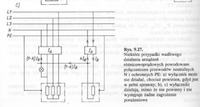I searched a lot of information on the Internet, including forum, I also asked a lot of people but I did not get a clear answer. If we have a single socket on one circuit, protected by a 30mA residual current circuit breaker and I short the N and PE wire together, will the switch switch off the contacts? There is no device connected to the outlet and we make a short circuit through a wire or a light bulb. We did such an experiment at work and the switch did not turn off, but apparently in many situations such a short circuit turned off the differential. After the N and PE conductors have the ground potential, where would the current flow in them after a short-circuit. And if there were two sockets (protected by a differential), one loaded and the other not, and in unloaded we would short PE with N, will the switch switch off? Perhaps the sensitivity of the switch is important here and one will turn off and the other will not?




